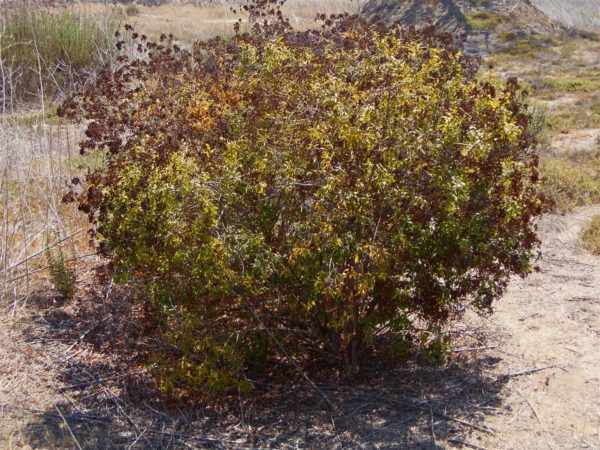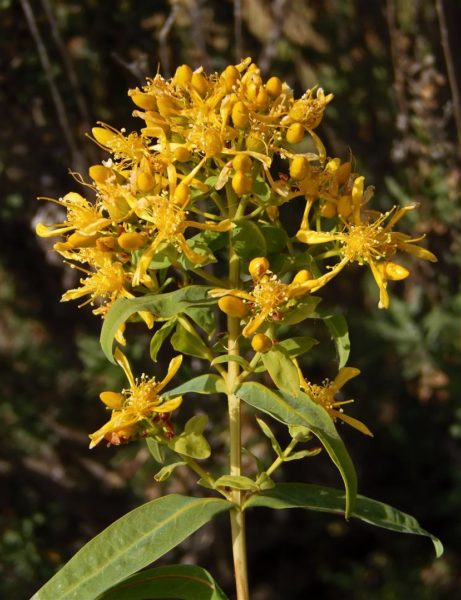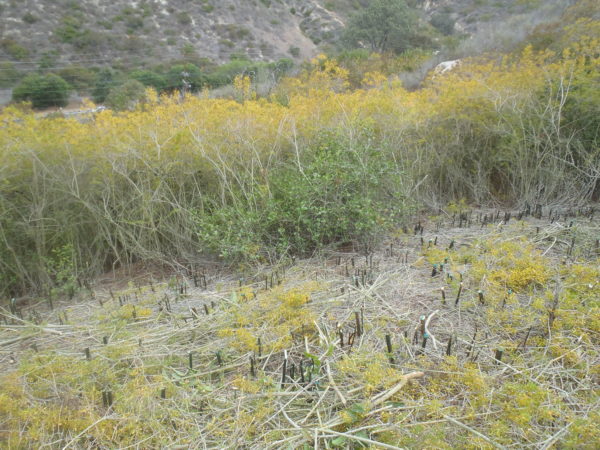In our efforts to preserve and protect our open space, one of the most common challenges we face is invasive plants. Introduced from areas all around the globe, these plants often lack natural controls in their new environments, allowing them to proliferate, out-compete natives, and change the nature of entire ecosystems. Invasive plants drive out native flora, reducing food and habitat resources for native species. They increase wildfire risk, clog local waterways, and interfere with recreation.
While we are all too familiar with the invasive mustards (whose flowers cause our hills to glow yellow after the rains), there are certain weeds which have only recently been documented in the area, whose presence pose a severe threat to local habitats. Dubbed ‘Emergent Invasive Weeds,’ the early detection and eradication of these species is of paramount importance to protect our wildlands. The California Invasive Plant Council estimates that the state spends $82 million per year on weed work, so catching a weed while it is emergent is critical.
In May of 2017, Laguna Canyon Foundation was notified by the California Native Plant Society of the discovery of such a species in Laguna Canyon – Canary Island St. John’s Wort (Hypericum canariense). This prolific seed producer, which can also spread through rhizomes (wide-spreading underground stems), was found to occur on about six fragmented acres on the east side of the 133, scattered on the steep terrain above Laguna Canyon Road between Big Bend and Forest Avenue. Based on observations of other populations near Dana Point and San Juan Capistrano, this species has the ability to invade intact plant communities and establish dense monocultures that crowd out native vegetation.
To make matters worse, the invader had been recorded growing near known populations of Laguna Beach Live-forever (Dudleya stolonifera), an endemic plant that is both state- and federally listed as a threatened species.
Teaming up with the City of Laguna Beach City Manager’s Office and Department of Public Works and the Natural Communities Coalition, LCF completed a detailed survey of the project area in the fall of 2017 and coordinated and participated in the effort to treat all known populations of Canary Island St. John’s Wort in this area. After spending several weeks this spring working on the steep canyon slopes, dodging patches of poison oak, and avoiding hawks overhead, we are proud to announce that the initial treatment has been completed!
But the work is not done: LCF will work with our partners to revisit these areas annually for the next four years to check for new growth and re-treat them as necessary.
For more information on emergent invasive weed species in Orange County and how to identify them, check out these resources provided by the California Native Plant Society:
- http://www.occnps.org/invasives/emergent-invasive-plant-management-program.html
- http://www.calflora.org/app/ipl?list_id=px388
For more information on how you can get involved in the detection of these species in our canyons and other efforts to restore and protect habitats in the Canyon, visit the Volunteer page on our website.



